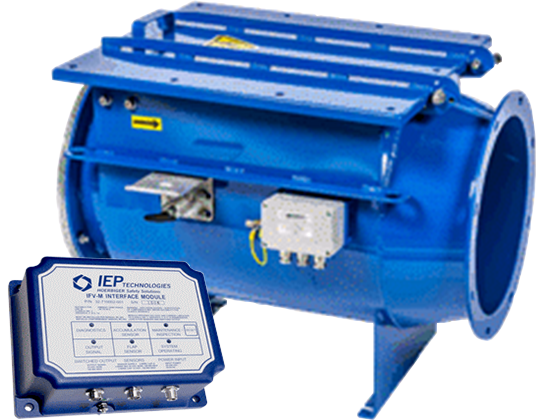
Hazard
NFPA 654 requires deflagration isolation to be considered to stop flame propagation between interconnected vessels, yet many vessels are installed without this vital component. Take the example shown here. A dust collector is installed which has an explosion relief vent panel. Mounted on top of a roof it will vent an explosion to atmosphere. However, without an isolation barrier, flame can propagate at high velocities from the collector to interconnected vessels causing devastating secondary explosions. Simply venting interconnected vessels is inadequate due to the huge ignition source and pressure piling effects associated with explosion propagation.
Mechanical Isolation Valve Solution
IEP Technologies offers both passive and active explosion isolation options to mitigate flame propagation. The passive explosion isolation valve is a self-actuating device, which provides a mechanical barrier to mitigate the propagation of flame and burning materials between connected equipment. An active high-speed isolation valve closes rapidly to provide a mechanical barrier to mitigate propagation of a deflagration. By design, it can withstand the full pressure of a deflagration from an enclosed vessel. It is often chosen to isolate low-strength, interconnected vessels from propagating deflagrations when product contamination is a concern. Typically explosion pressure detectors mounted on the vessel detect the pressure excursion from an impending explosion. The detectors transmit a signal to a control panel, which triggers the high-speed isolation valve while simultaneously shutting down the process.
Chemical Isolation Solution
Chemical explosion isolation barriers from IEP Technologies are triggered in the same manner as the high-speed isolation valve solution described above. In response to the triggering signal, they rapidly discharge extinguishing agent into the duct, mitigating the passage of flame and burning materials to interconnected process equipment. In a large duct, suppressant distribution is provided through 3-in. piping. For a small sized duct, a 1-in. hose assembly connected to a bracket mounted suppressant distribution head delivers the suppressant.


